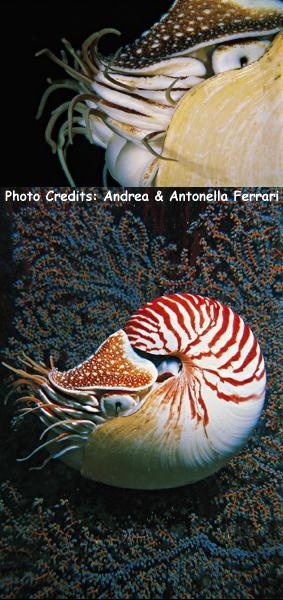
By Bob Goemans


Likely Reef Tank Suitable
Likely Fish-Only Tank Suitable
These are actually 'living fossils,' as they have basically remained unchanged for 500 million years. Its relatives are octopus, squid, and cuttlefish, and its mantle produces its outer shell. As the animal grows, its body moves forward and a wall called a 'septum' seals off the older chambers. The newest chamber simply contains its body. It's the reason why it's called a 'chambered' Nautilus. It can completely withdraw into the newest chamber and close the opening with a leather-like cover/hood.
When viewed from the top, the shell is dark with irregular stripes, making it blend into the darkness of deeper water below it. Viewed from below, the shell is white, therefore blending with brighter water above it. This form of camouflage is called 'countershading.'
A gas, an argon-nitrogen mixture, in the older closed chambers controls its buoyancy. A tube that connects the older gas filled chambers allows it to adjust its height in the water by manipulating the ratio of liquid gas and seawater in those chambers, thereby changing its weight/ballast, similar to that of a submarine. It moves by pulling water into its mantel cavity and forcing it out, similar to how octopus move. The direction the water is forced out controls the direction of its movement, which can either be forward, backwards or sideways.
Its eyes are poorly developed, and its best to maintain these creatures in a darken state until feeding time. Diet consists mainly of small fishes, crabs, and shrimp.